Mac and Cheese
Melted Cheese...With Macaroni
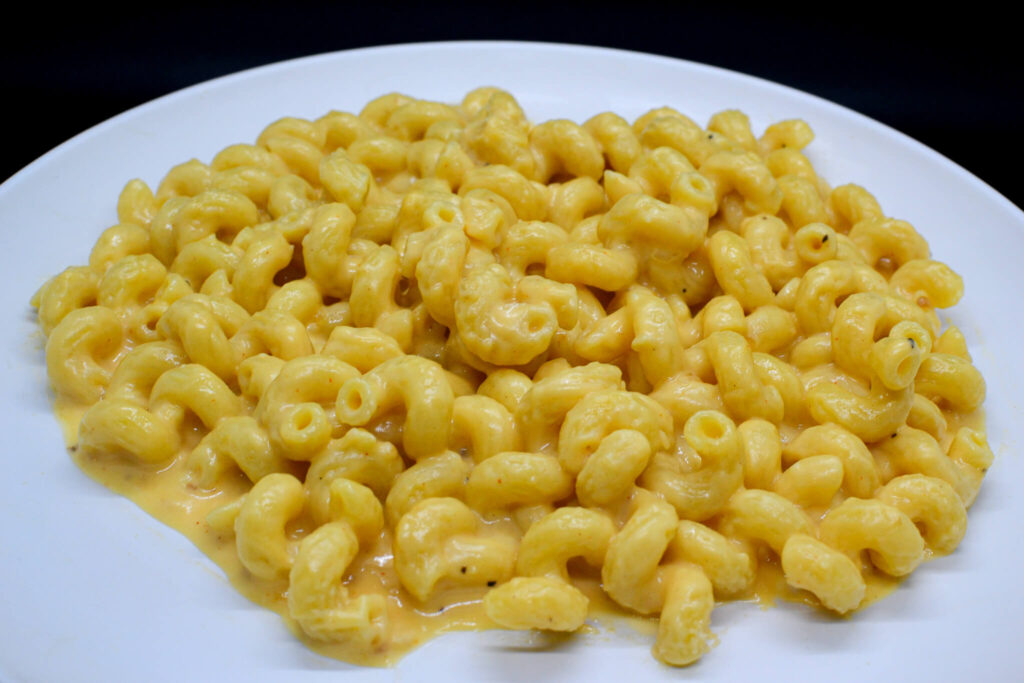
What Is Mac and Cheese?
Macaroni and cheese, commonly known as mac ‘n’ cheese, is a classic comfort dish consisting of cooked macaroni pasta and a creamy cheese sauce. The sauce is usually made from melted cheeses like cheddar or Gouda, mixed with milk or cream, and sometimes thickened with a flour-butter roux. Often baked to achieve a crispy top, mac ‘n’ cheese is celebrated for its rich flavor, creamy texture, and versatility, making it a beloved staple in American cuisine.
Ingredients For Mac and Cheese
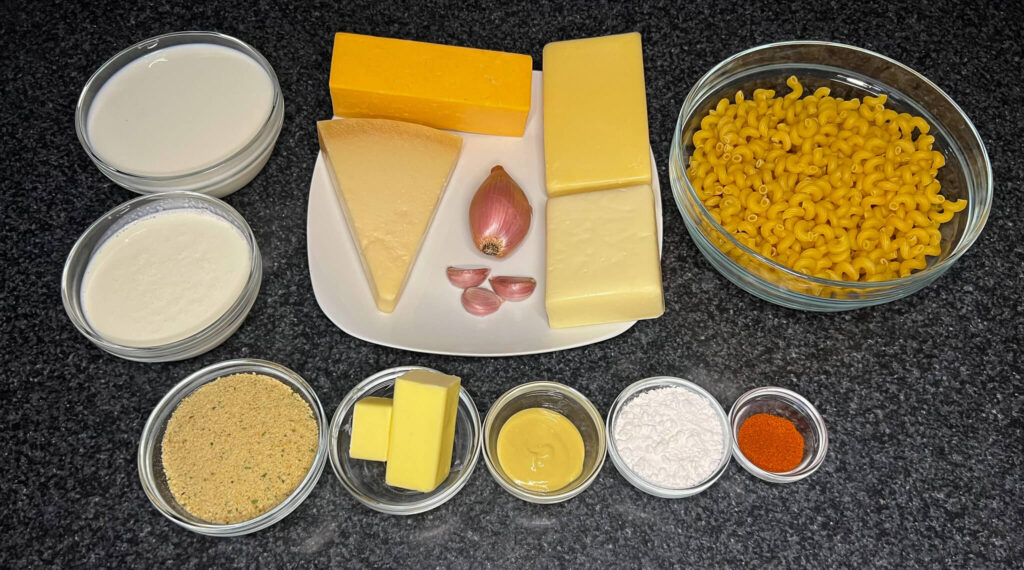

Produce
1 Shallot
3 Cloves of Garlic
Refrigerated
8 oz Parmesan Cheese
8 Oz Gruyère Cheese
8 oz Fontina Cheese
16 oz Sharp Cheddar Cheese
1 Cup Heavy Cream
2 Cups Whole Milk
6 Tbsp Butter

Grocery
1/2 Cup Bread Crumbs
1 Tbsp Dijon Mustard
4 Tbsp Flour
16 oz Cavatappi Pasta

Spices
1 Tsp Paprika
How To Make Mac and Cheese
Step 1
Prep Cheese & Produce
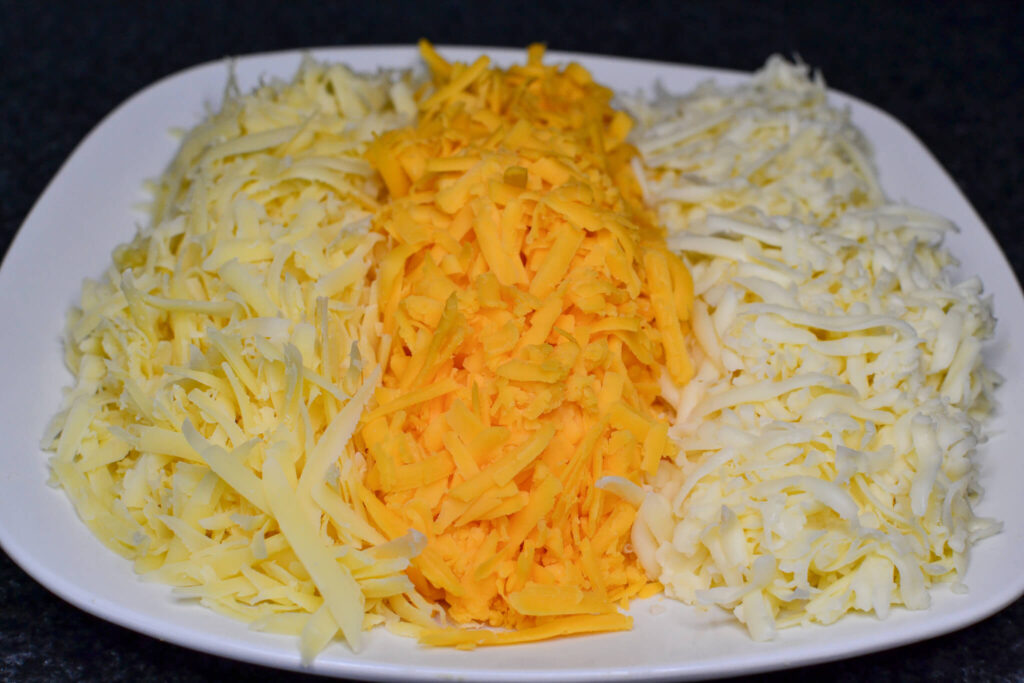
Start by preparing the key ingredients for your mac and cheese. Shred a mix of sharp cheddar, Gruyère, Fontina, and Parmesan cheeses, each selected for its unique contribution to the dish’s flavor:
- Sharp Cheddar: This cheese is the backbone of your mac and cheese, providing a classic, bold taste that is unmistakably ‘cheesy’. Its robust flavor ensures that the dish has a strong and familiar cheese presence, making it instantly appealing and comforting.
- Gruyère: Known for its nutty depth, Gruyère adds a layer of complexity to the dish. It melts beautifully, ensuring a smooth texture, and its slightly sweet, nutty notes bring an elegant richness that elevates the dish from ordinary to extraordinary.
- Fontina: This cheese is key for achieving the ultimate creamy melt. Fontina has a mild yet distinct flavor and a velvety texture, which helps in creating that irresistibly gooey, stretchy quality that is so desired in a perfect mac and cheese.
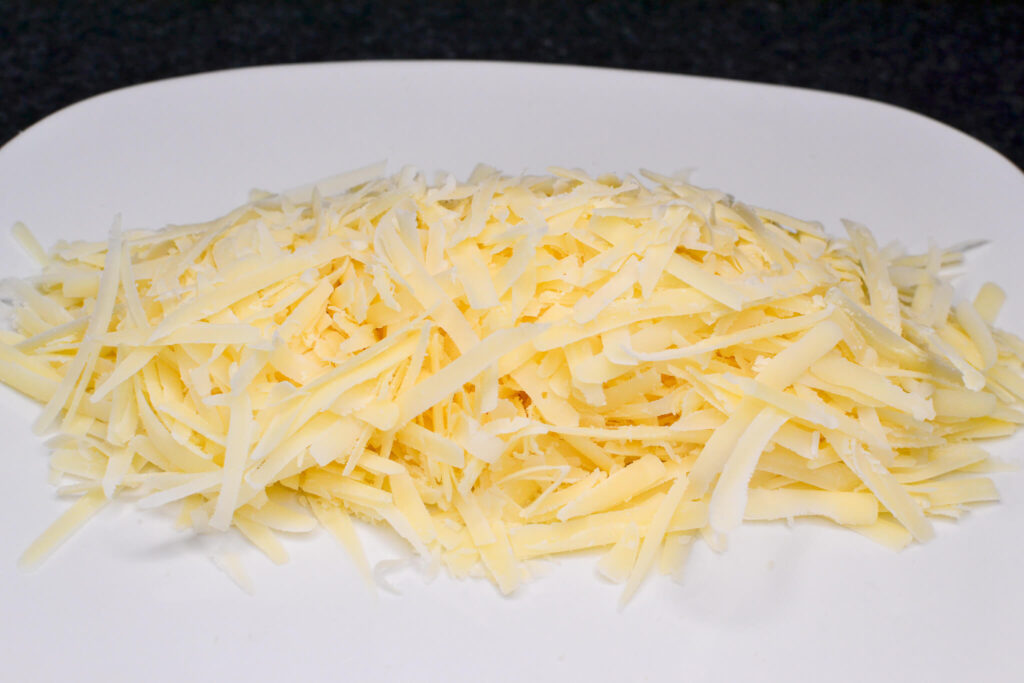
- Parmesan: A touch of Parmesan brings a salty, umami kick. It introduces a hint of sharpness and depth, rounding out the flavors and adding a subtle but important counterpoint to the creamier cheeses.
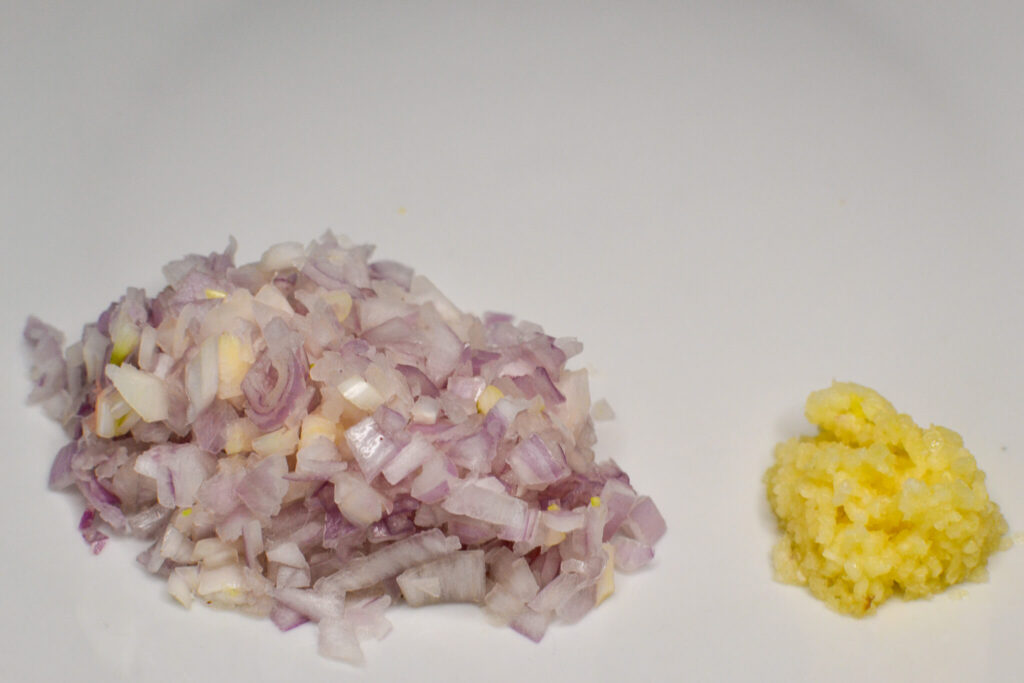
After preparing the cheeses, focus on the shallots and garlic. Finely chop them to create a savory flavor base. Shallots bring a mild, slightly sweet taste, complementing the boldness of the cheeses. Garlic adds a distinct warmth, lending depth to the overall flavor profile.
Together, they subtly enhance the cheese sauce, ensuring the flavors are well-balanced and not dominated by the cheeses. This preparation is key to achieving a mac and cheese that is rich in both flavor and texture.
Step 2
Make Cheese Sauce
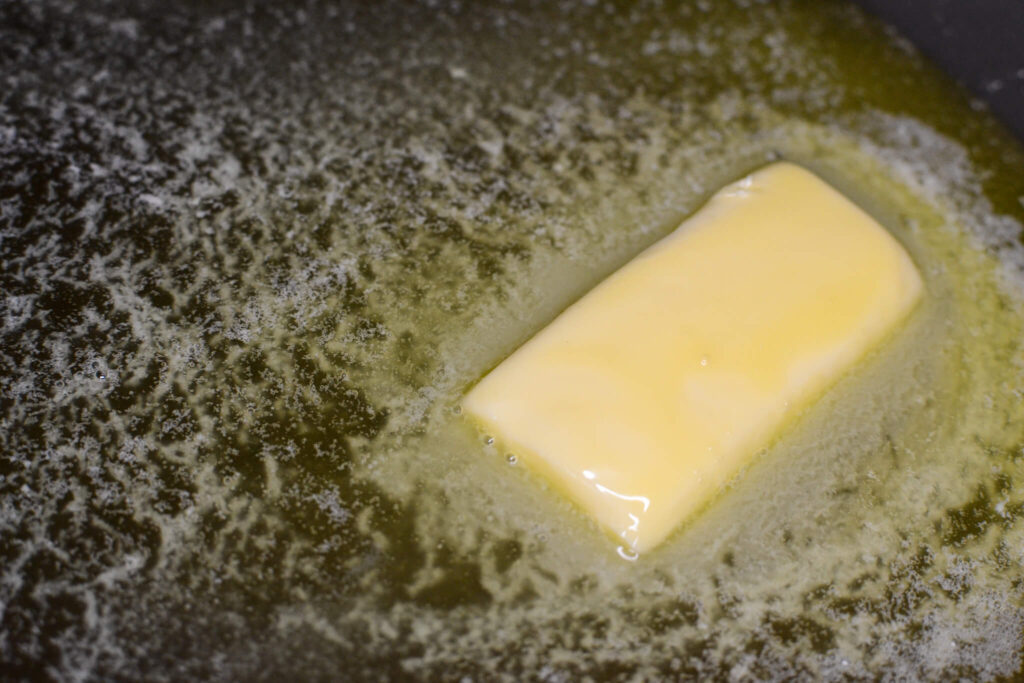
Begin your sauce by melting butter in a pan. The butter serves a dual purpose: it adds richness and forms the base for your roux, which will thicken the sauce.
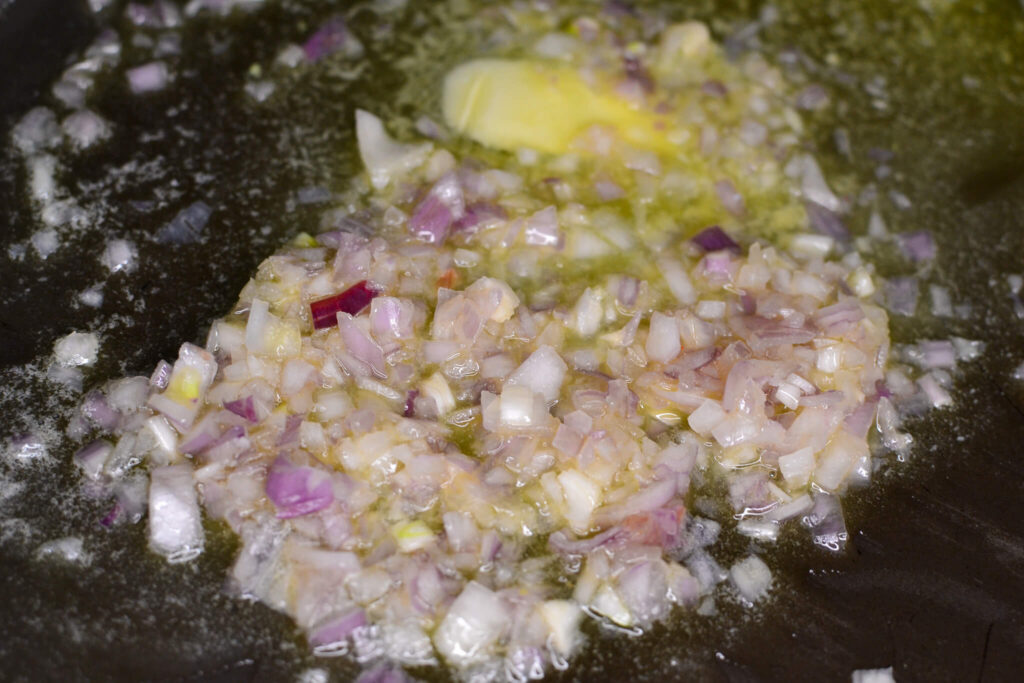
Once the butter is melted, add in the chopped shallots. Cook them until they’re translucent, which softens their flavor.
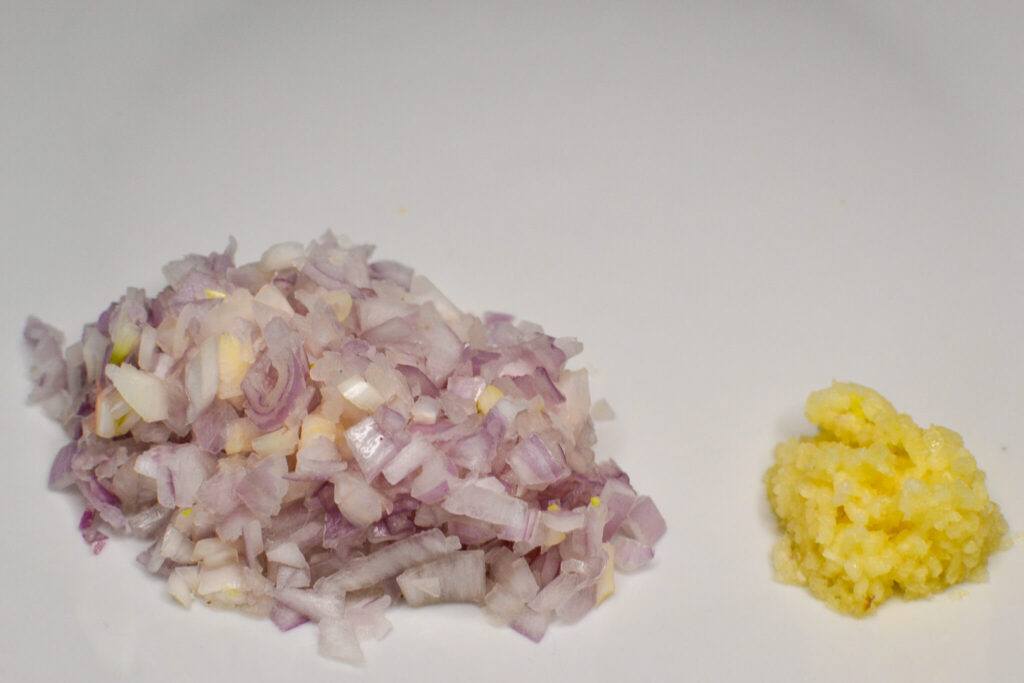
Then, add the garlic, cooking it just enough to remove the raw taste without letting it turn bitter.
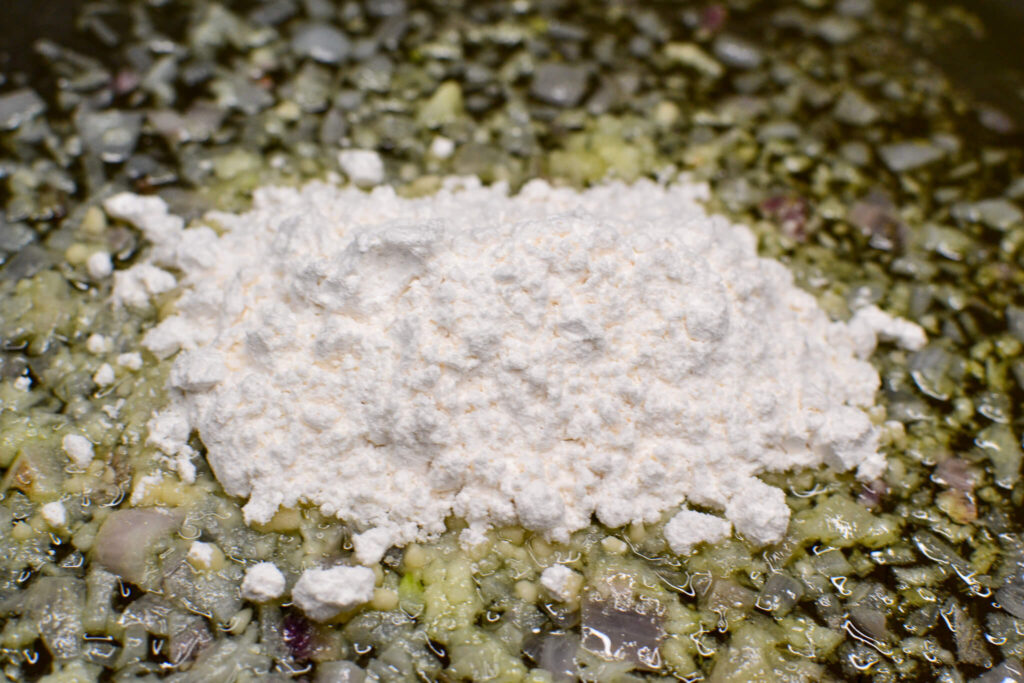
Next, sprinkle flour over the butter, shallots, and garlic to create your roux.
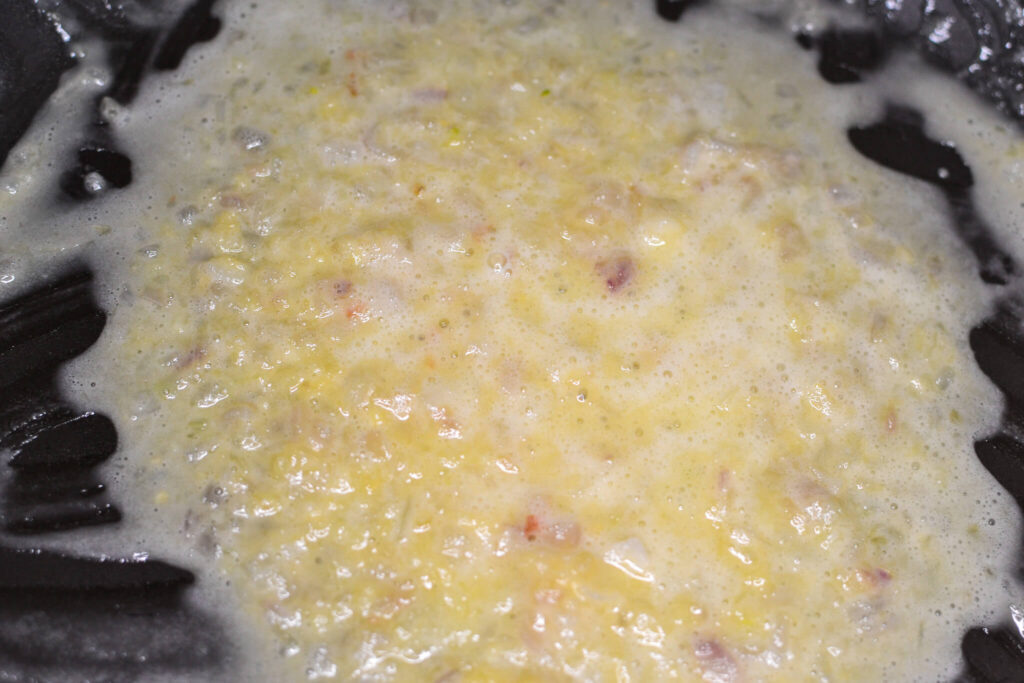
Cook this mixture until it turns a golden color and loses the raw flour flavor. This step is important for thickening the sauce and giving it a good consistency.
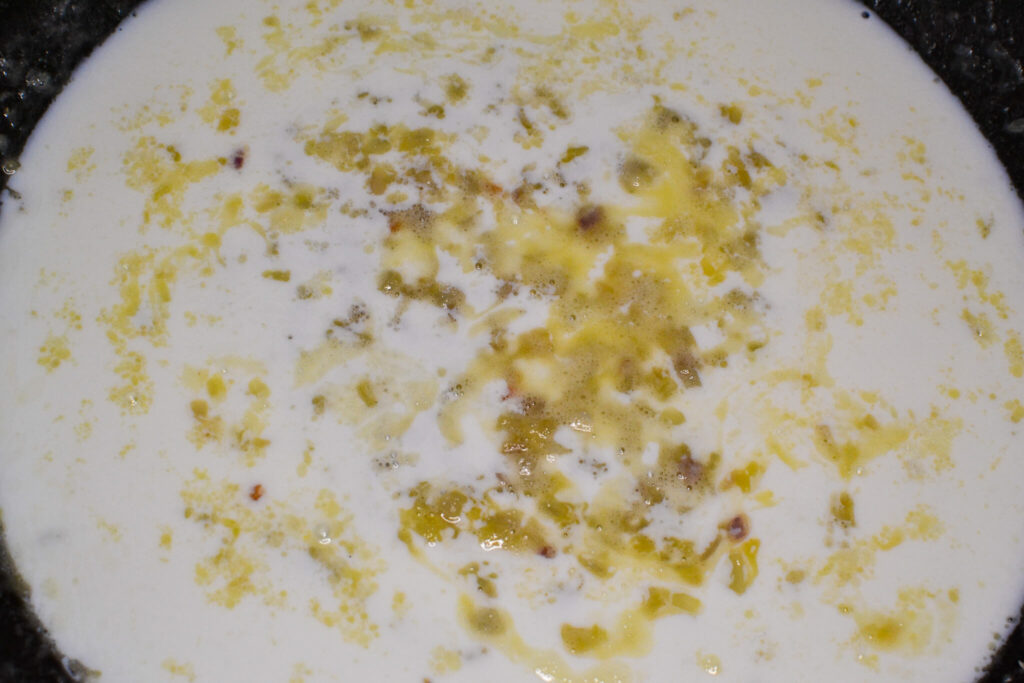
Slowly whisk in milk and heavy cream to avoid any lumps.
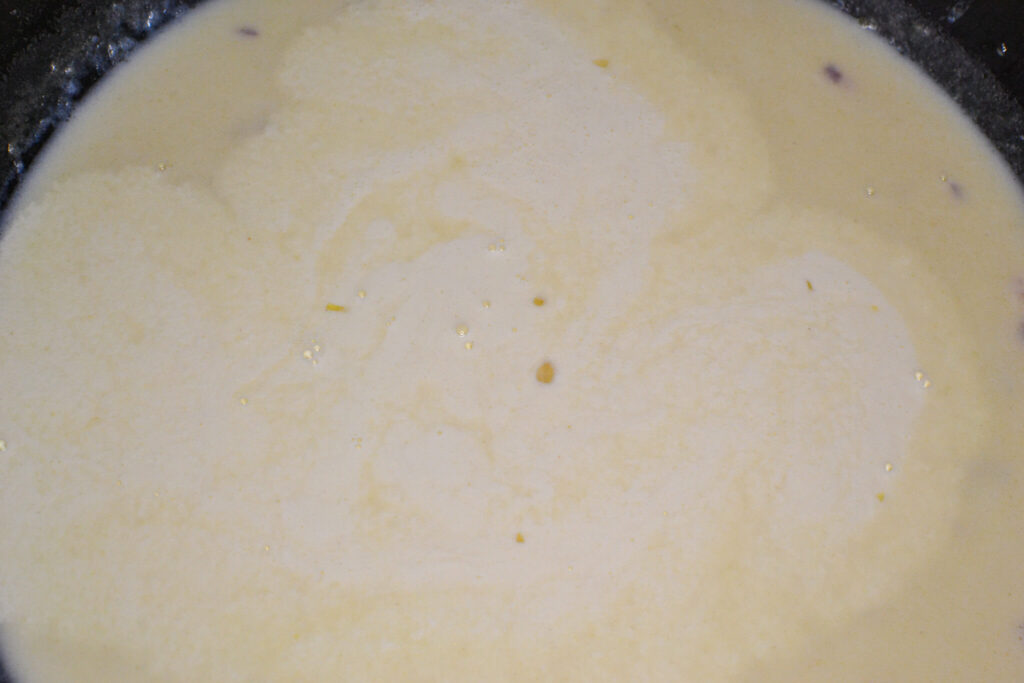
This gradual addition is key to achieving a smooth and creamy base for your sauce. As you stir, the mixture will thicken into a rich base.
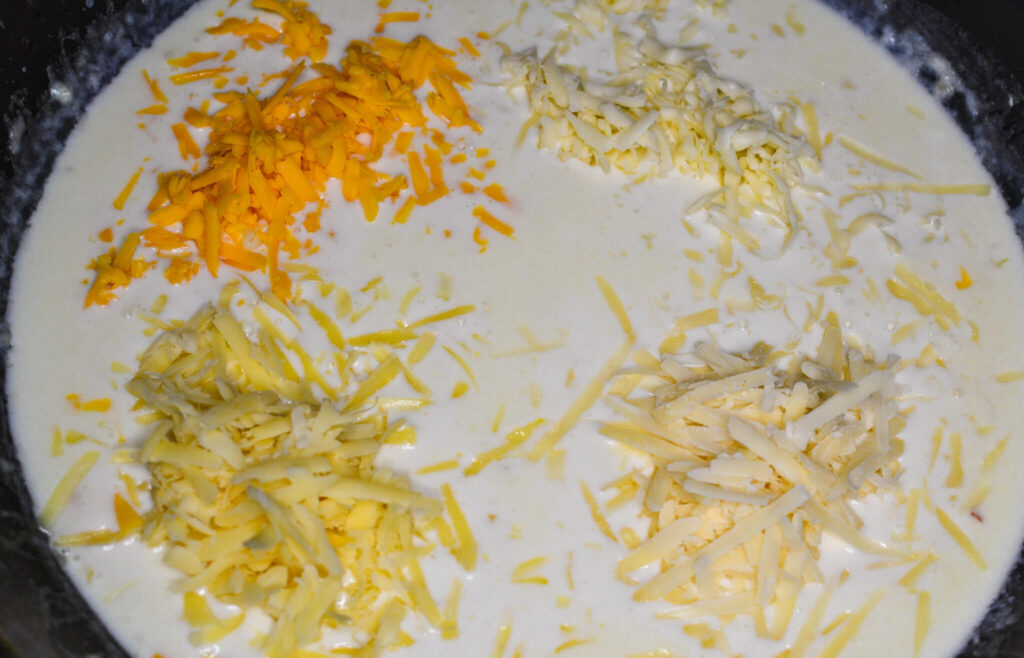
Now, it’s time for the cheese. Add the shredded sharp cheddar, Gruyère, Fontina, and Parmesan into the sauce. Stir until the cheese has completely melted and blended into the sauce. These cheeses create a flavorful and indulgent sauce, each adding their unique taste and melting qualities.
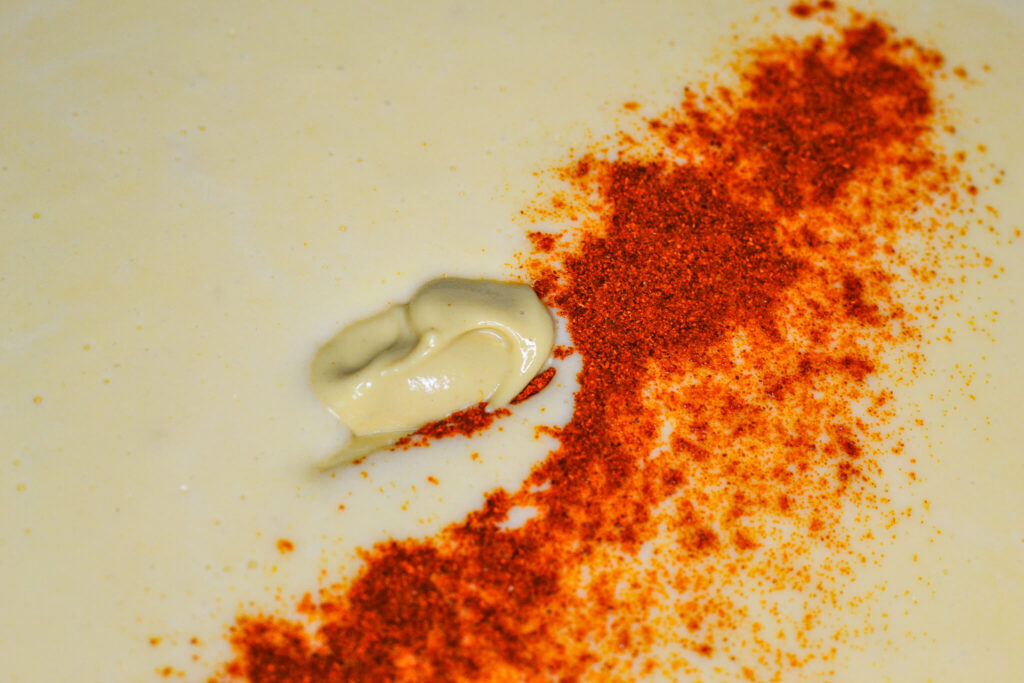
Finish the sauce by adding a bit of Dijon mustard and a sprinkle of paprika. These seasonings bring a mild heat and depth to the sauce without overpowering the cheese flavors.
Step 3
Cook & Combine Pasta
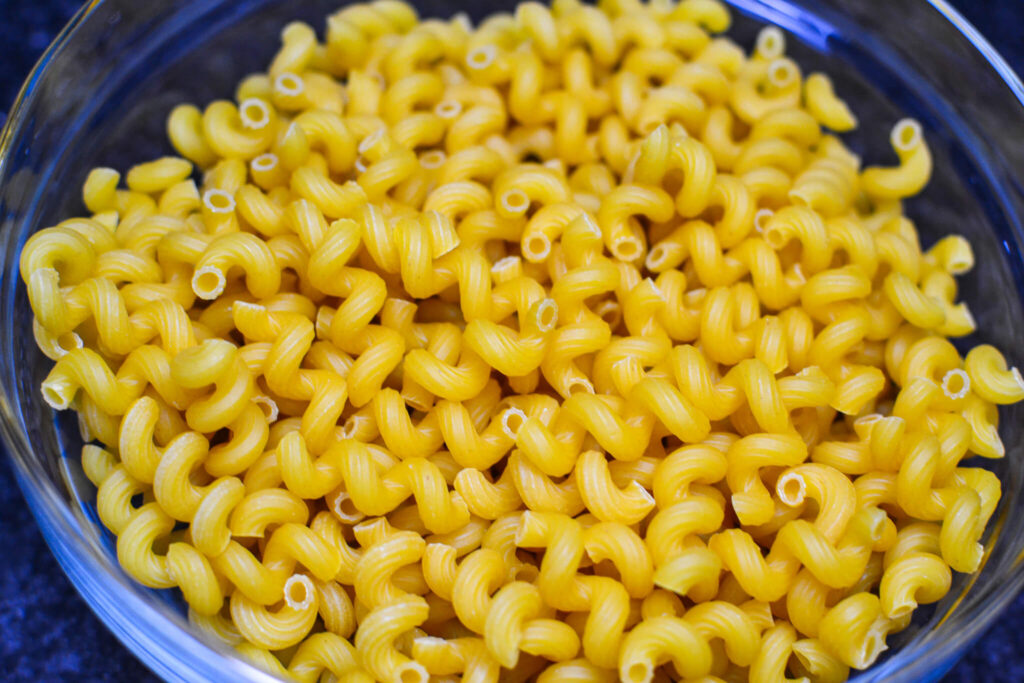
Begin by boiling the dried cavatappi pasta. This particular shape is excellent for mac and cheese because its spirals are adept at capturing and holding the cheese sauce. Cook the pasta until it is al dente, which is slightly firm to the bite.
For the mac and cheese recipe, I used Cellentani Pasta.
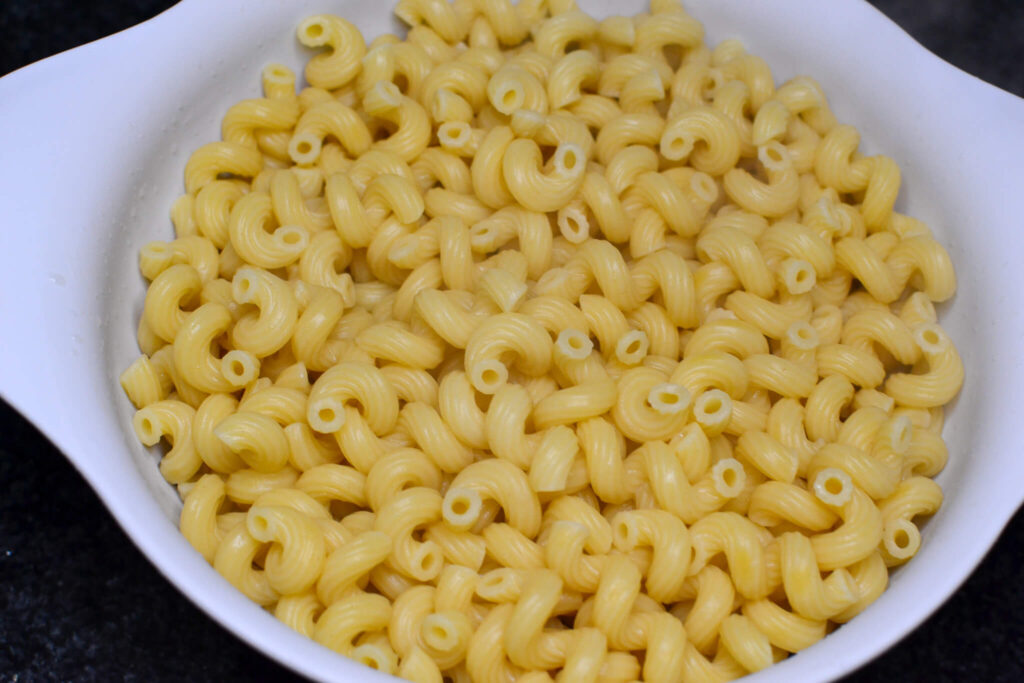
Once the pasta is cooked to the right texture, drain it. Draining is crucial to remove excess water, which, if left, could make the sauce too thin and watery, diluting its flavor and creamy consistency.
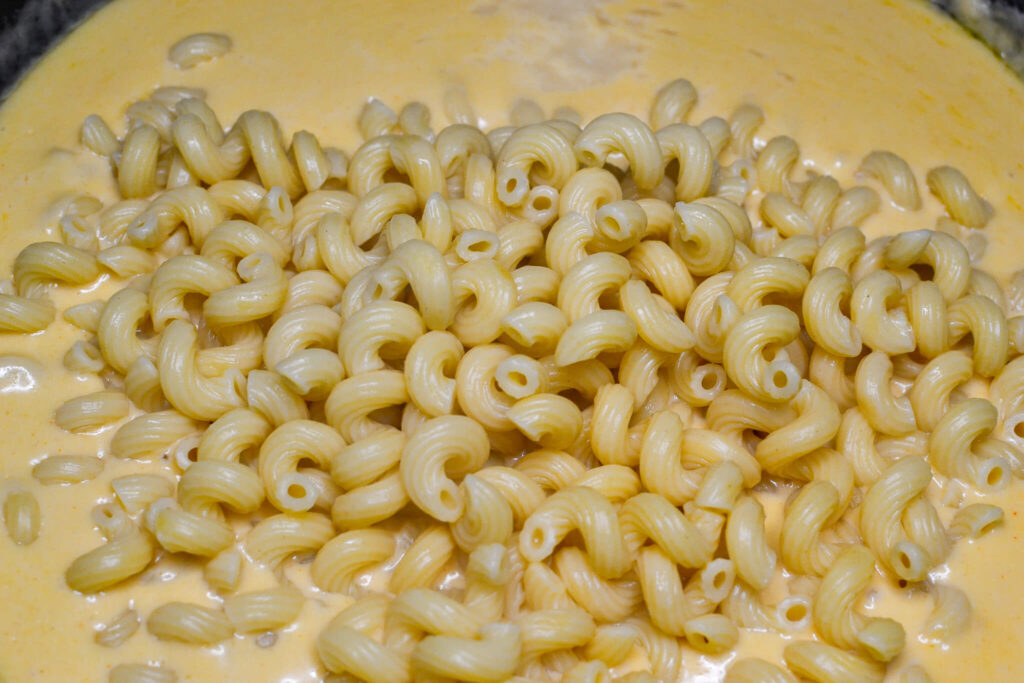
After draining the pasta, mix it with the cheese sauce you’ve prepared. It’s important that the pasta, cooked to al dente, maintains its slightly firm texture when mixed with the sauce.
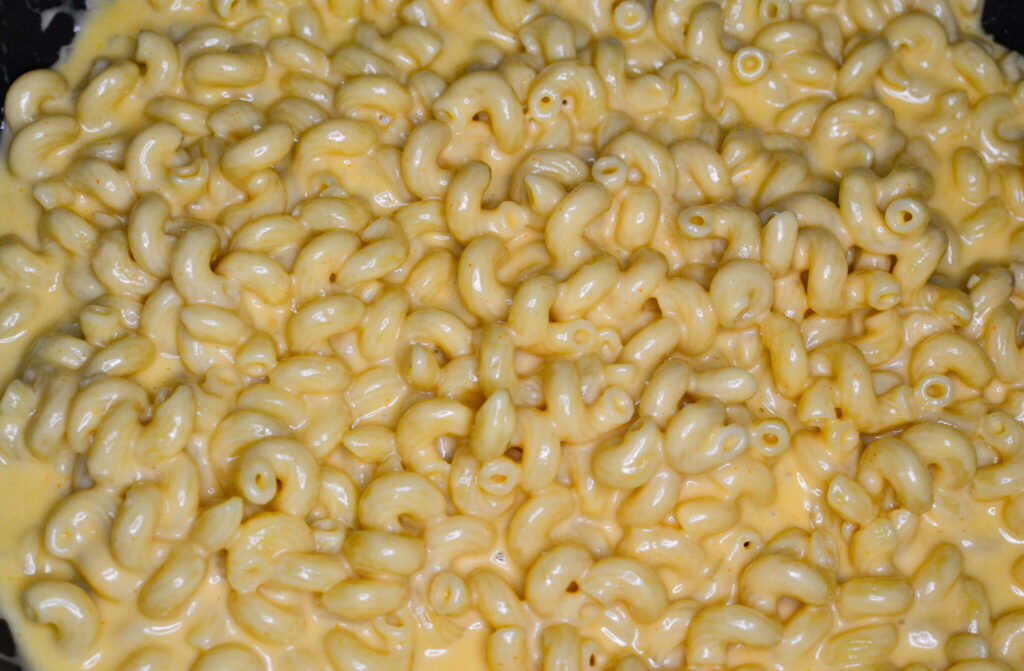
The rich, creamy sauce should evenly coat each piece of pasta. This ensures that every bite is flavorful and has a balanced texture of firm pasta and smooth sauce, which is essential for a great mac and cheese.
Step 4
Make & Bake Topping (Optional)
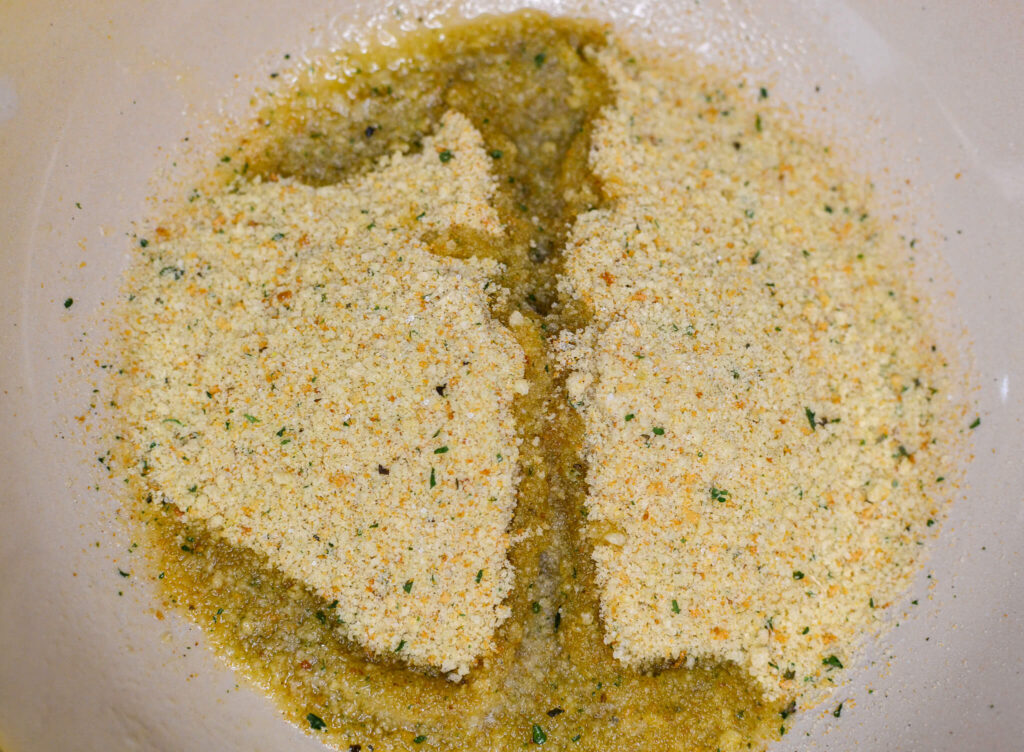
For the topping, begin by mixing breadcrumbs with melted butter in a bowl. The breadcrumbs are essential for adding a satisfying crunch that contrasts the creamy mac and cheese below.
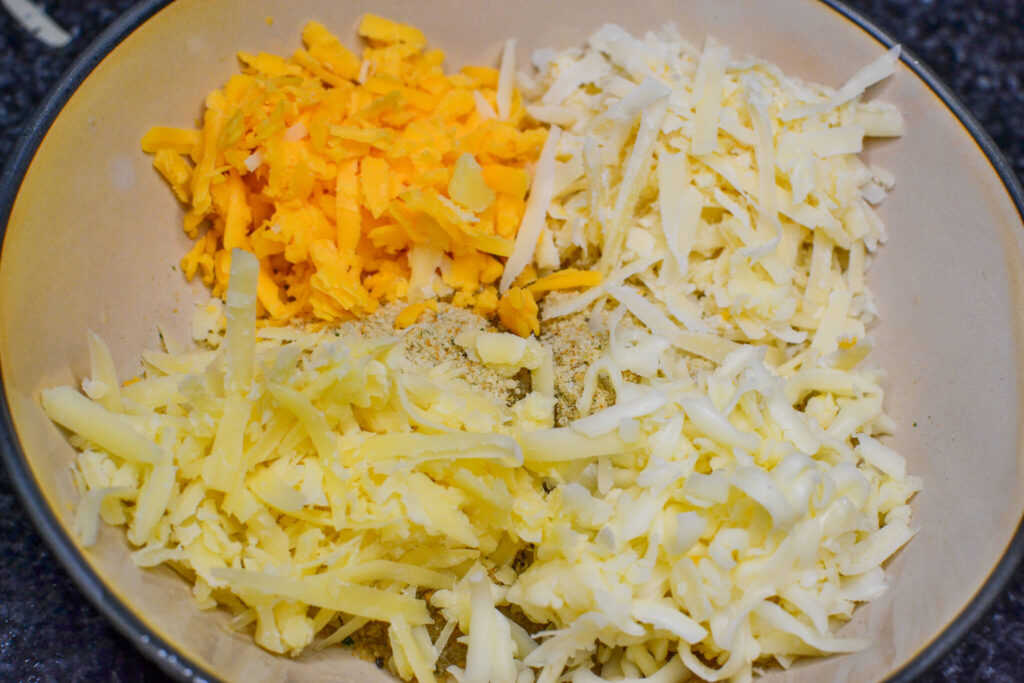
Incorporate some extra shredded cheese into this mixture, enhancing the flavor and ensuring a deliciously cheesy crust once baked.
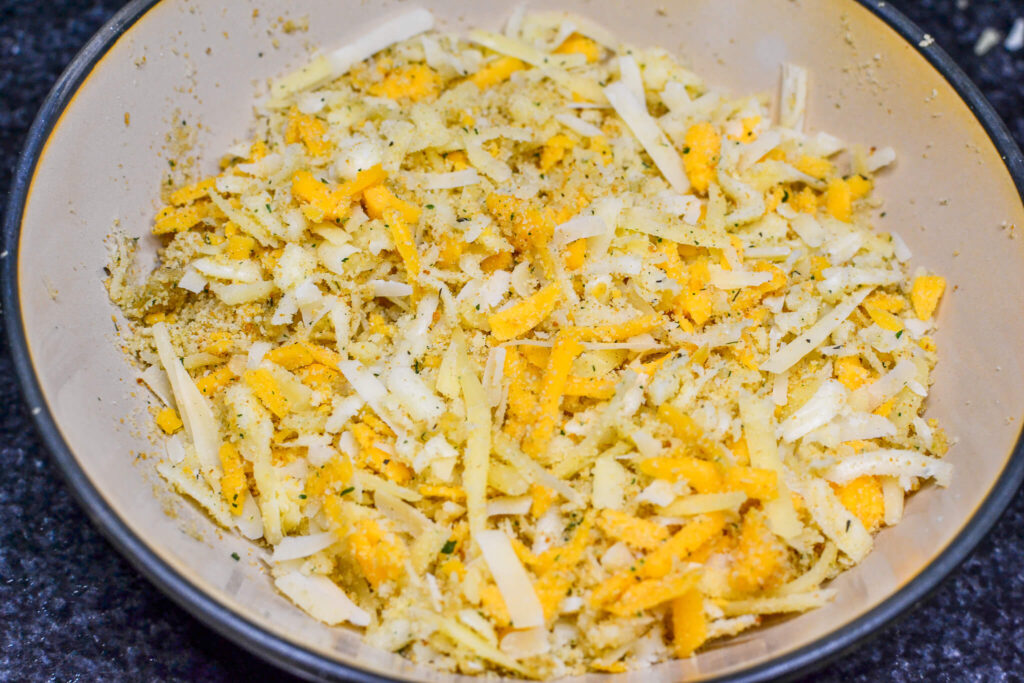
klsdjf;asdf;asdjfsdf
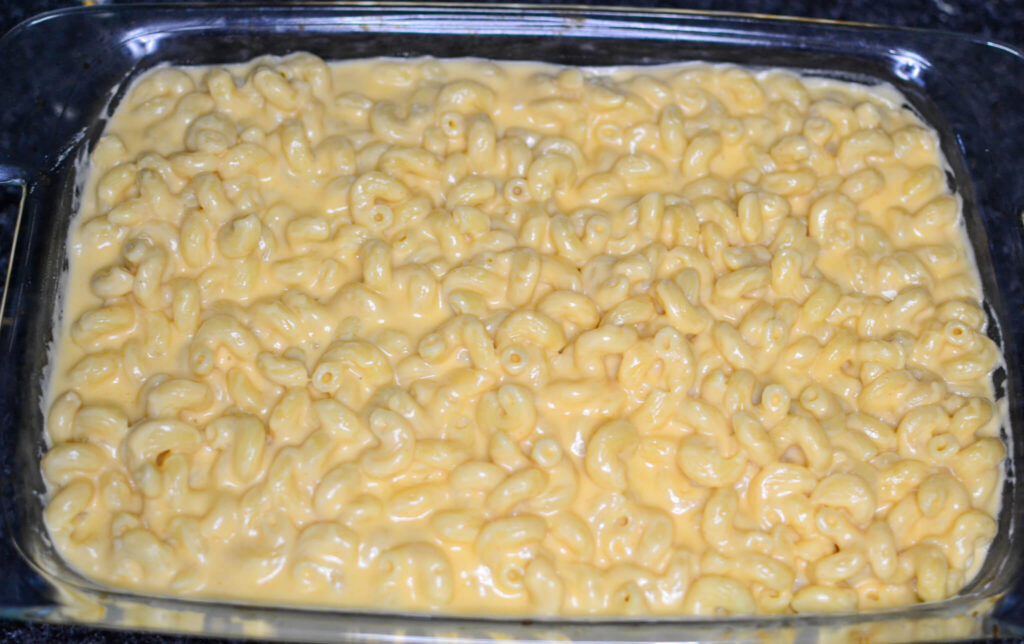
Start by transferring the mac and cheese mixture into your baking dish. This step is crucial as it sets the stage for the final texture and presentation of the dish.
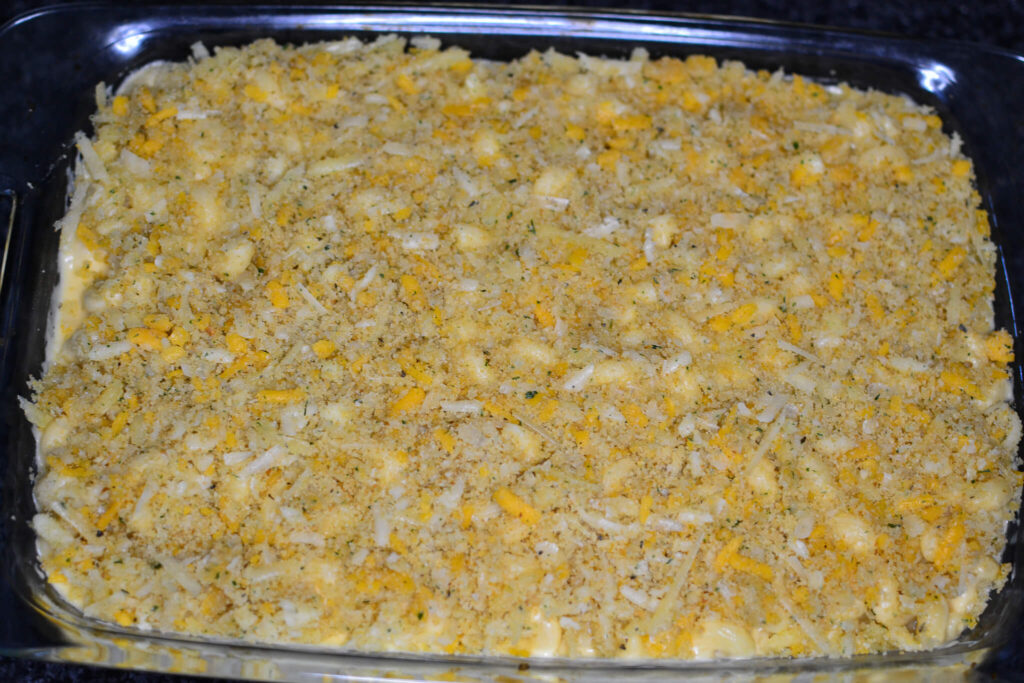
Spread this breadcrumb-cheese mixture evenly over the top of your mac and cheese in the baking dish. This layer not only adds texture but also enriches the dish’s overall taste.
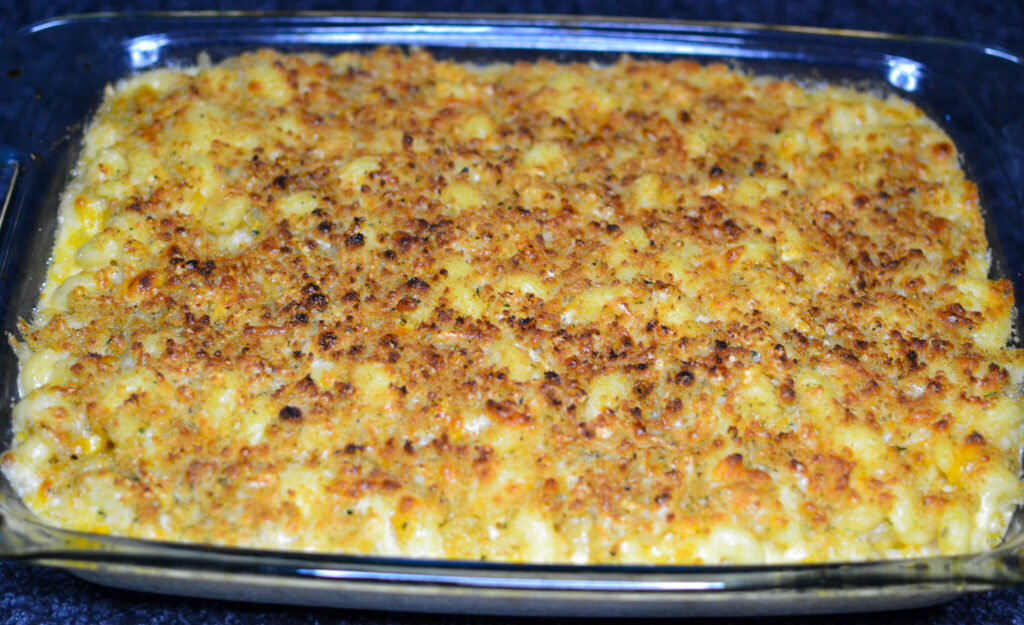
Finally, place the dish under the broiler. Keep a close watch as the topping browns quickly under the broiler’s high heat. Broil until the breadcrumbs turn a golden brown and the cheese in the topping melts, forming a crispy, golden layer. This broiling step is essential as it adds a delightful textural contrast and a slightly toasted flavor to the dish.
Step 5
Enjoy Your Mac and Cheese!
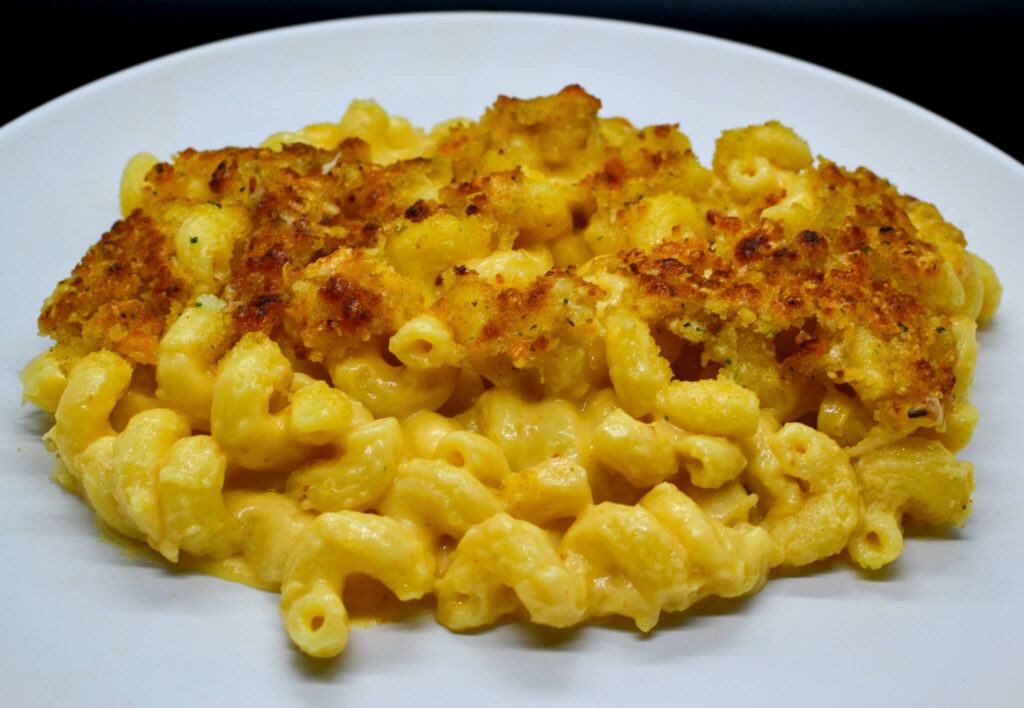
After broiling, remove the mac and cheese from the oven and let it sit for a few minutes. This brief resting period allows the flavors to meld together and the sauce to settle, ensuring that each serving is perfectly creamy and cohesive.

The Handmaid's Tale

Inspiration

More About Mac and Cheese
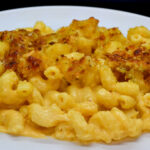
Mac and Cheese
Ingredients
- 1 Shallot
- 3 Garlic Cloves
- 8 oz Parmesan Cheese
- 8 oz Fontina Cheese
- 16 oz Sharp Cheddar Cheese
- 1 cup Heavy Cream
- 2 cups Whole Milk
- 6 tbsp Butter
- 1/2 cup Bread Crumbs
- 1 tbsp Dijon Mustard
- 4 tbsp Flour
- 16 oz Cavatappi Pasta
- 1 tsp Paprika
Instructions
Prep Cheese & Produce
- Shred the cheeses: sharp cheddar, Gruyère, Fontina, and Parmesan.
- Finely chop the shallot and garlic for the sauce base.
Make Cheese Sauce
- Melt 6 tbsp butter in a pan. Add chopped shallots and cook until translucent. Add garlic and cook briefly.
- Sprinkle in 4 tbsp flour, stirring to form a roux, and cook until golden.
- Gradually whisk in 2 cups whole milk and 1 cup heavy cream, allowing the mixture to thicken.
- Slowly stir in the shredded cheeses until fully melted and smooth.
- Add 1 tbsp Dijon mustard and 1 tsp paprika for extra flavor.
Cook & Combine Pasta
- Cook 16 oz of cavatappi pasta until al dente. Drain well.
- Combine the cooked pasta with the cheese sauce, ensuring the pasta is fully coated.
Make & Bake Topping
- Mix 1/2 cup bread crumbs with a little melted butter and some extra shredded cheese.
- Transfer the mac and cheese mixture to a baking dish, spread the bread crumb topping evenly over the pasta, and bake or broil until golden brown.
Enjoy Your Mac and Cheese!
- Allow the dish to cool slightly before serving for the best creamy texture and flavor.
Macaroni and cheese, affectionately known as mac ‘n’ cheese, has a rich history that dates back centuries. Its earliest roots can be traced to Italy, where pasta and cheese casseroles appeared as early as the 14th century. Recipes resembling what we now know as macaroni and cheese were found in Italian cookbooks of the time, such as “Liber de Coquina,” one of the oldest medieval cookbooks.
The dish as we recognize it today began to take shape in the 18th century. It is often attributed to Thomas Jefferson, the third President of the United States, who encountered pasta while in Paris and northern Italy. Jefferson brought back macaroni and a pasta machine to America. In 1802, at a state dinner, he served a dish of baked macaroni with cheese, popularizing it in the United States.
The recipe for macaroni and cheese was also published in Elizabeth Raffald’s 1769 book “The Experienced English Housekeeper”. Raffald’s recipe called for a Béchamel sauce mixed with cheddar cheese, layered with macaroni, and then topped with more cheese and breadcrumbs before baking.
Mac ‘n’ cheese evolved in the United States into a comfort food staple, especially during the Great Depression, when it was affordable and filling. In 1937, Kraft Foods introduced boxed macaroni and cheese, which became an instant hit due to its convenience and low cost.
Today, macaroni and cheese is beloved worldwide, with countless variations, from the traditional creamy, baked style to inventive gourmet versions with various cheeses, toppings, and mix-ins. It remains a comforting and nostalgic dish, a symbol of American cuisine, and an example of how a simple meal can become a cultural icon.

